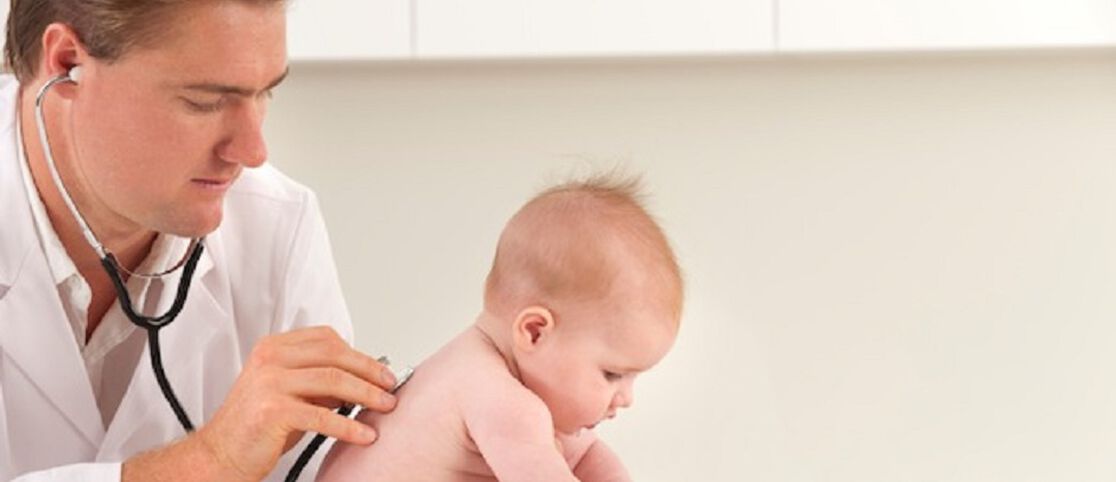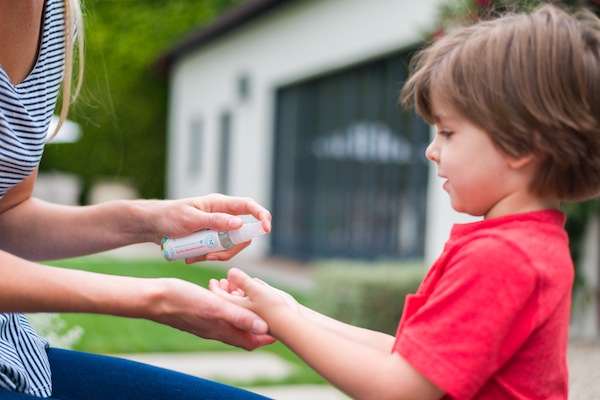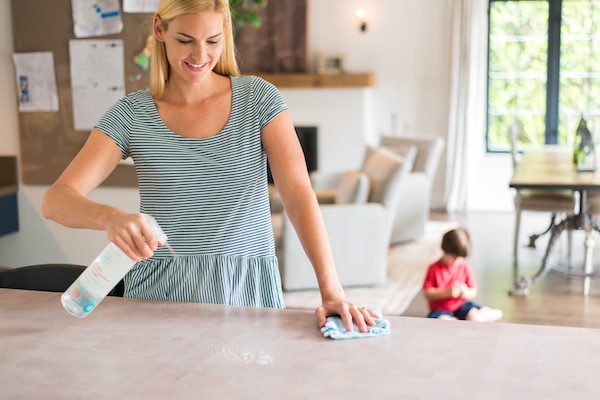With cold and flu season once again bearing down upon us, consumers are stocking up on supplies in preparation for the latest round of germ warfare. One category of tools in that arsenal are products containing antibacterials, which are often chemicals like triclosan, triclocarban, and benzalkonium chloride. And sometimes you might be buying products that contain these chemicals whether you’re intending to or not.
By some estimates, 75 percent of conventional liquid hand soaps contain antibacterial compounds and, surprisingly, they’re increasingly present in a wide variety of other products too — toys, toothpaste, cleansers, cutting boards, cosmetics, socks, baby bedding, and other household items. Antibacterials are seemingly all around us and there’s significant consumer demand for them (we get asked all the time!). But do these products really help prevent the colds and flus that make up the bulk of contagious illnesses?
The short answer is “no,” and a growing body of evidence shows they could be doing more harm than good.
Here are 5 reasons to avoid antibacterials:
1. They probably aren’t battling the bugs you’re worried about.
-
Colds and influenza are not caused by bacteria, so antibacterials are completely ineffective at preventing them.
-
According to Healthy Child Healthy World, “Many of the 5,000 EPA-registered antibacterial products sold don’t actually kill infectious bacteria – the invader that everyone’s so afraid of. Often, these products restrain growth of algae, odor-causing bacteria, bacteria which cause spoilage or deterioration, and microorganisms infectious only to animals.”
2. They aren’t much more effective than regular soaps and cleaners.
-
In 2005, a U.S. Food and Drug Administration advisory panel concluded that antibacterial soap is no more effective than regular soap and water at removing germs.
-
The U.S. Centers for Disease Control (CDC) says that “[a]ntibacterial-containing products have not been proven to prevent the spread of infection better than products that do not contain antibacterial chemicals.”
3. They can increase the problem of bacterial resistance (which leads to situations where antibiotics and antibacterials can’t kill what we really want them to — yikes!).
A recent study published in Environmental Science and Technology reported that triclosan, the most commonly used antibacterial, substantially increases triclosan-resistant bacteria. While more research needs to be done, initial studies have shown both benzalkonium chloride and triclocarbon also have the capability of creating bacterial resistance.
4. Most common antibacterials are just plain nasty.
-
Triclosan persists in the environment, poses health risks like hormone disruption, and is now found in the bodies of the majority of the U.S. population. In 2009, the CDC reportedly found triclosan in the urine of 75 percent of Americans.
-
In animal studies, both triclosan and triclocarbon have been found to interfere with hormones critical for normal development and function of the brain and reproductive system.
-
Benzalkonium chloride doesn’t appear to be quite as bad as triclosan and triclocarbon, but it definitely still poses concerns. The Environmental Working Group’s Cosmetic Safety Database states there is evidence that benzalkonium chloride is an immune, skin, and respiratory toxicant. While at low concentrations it might not pose significant risks to most people, those with allergies, asthma, and general sensitivities (read: babies and kids) should probably avoid it.
5. Our obsession with sanitation could be compromising our children’s immune systems.
Honest Co-Founder and Chief Products Officer Christopher Gavigan explains:
In my opinion, the approach that all germs should be destroyed, and kids should be raised in a sterile home is a mistake, so in reality, a dose of "dirt" could be a good approach to help prevent allergies in kids. If we over-clean and sterilize, children's immune systems will not mature. The marketplace is filled with messaging and products leading consumers to antibacterial soaps, antibacterial cutting boards, and even antibacterial pacifiers. As a result, the immune system has shifted away from fighting infection to developing more allergic tendencies. In medicine, this "hygiene hypothesis" is gaining more acceptance.
The concern is that all this germ-killing may end up leaving us more vulnerable to infection — as the worry that the overuse of antibacterial products kill off good and weak bacteria, leaving only the strong resistant ones behind. Our bodies no longer need to fight germs as much as they did in the past. Most bacteria are harmless, and we need to be exposed to numerous different microbes as we grow to develop the antibodies that make up a strong immune system.
What can you do to battle bugs?
Keep your hands clean. Frequent hand washing is the most effective way to cut down on colds and flus, and unless you’re a germaphobe, you should probably be washing your hands more — and better. Use a simple, safe hand soap and rub hands vigorously for 15-20 seconds. An easy way to ensure you’re doing it long enough is to sing the ABCs a couple times — now it’s a learning moment for your child, too.
And, speaking of your child, wash her hands as well. Think of how often those little mitts end up in her mouth! When you can’t get to a sink, use a safe hand sanitizer — something plant-based without toxic additives or synthetic questionables. (Note: Hand sanitizers are only effective on relatively clean hands, they can’t cut through dirt. Use wipes to rub off any dirt first.)
Keep your house clean. Don’t worry, you don’t need to sterilize every surface. According to pediatrician Dr. Alan Greene, “In a number of different fascinating studies, researchers have carefully cultured every imaginable surface of typical homes to find where the disease-causing germs live. It turns out that the kitchen harbors more germs than any other room in the home — more than the bathroom. The greatest concentration is found in the moist germ havens we call kitchen sponges and dishcloths.” Greene says microwaving these items for 2 minutes is the most effective way at sterilizing them and will go a long way towards preventing infections. For most other surfaces, cleaning as usual should suffice.
Germ fighting in the home comes from thoroughly cleaning—even if it’s just with soap and water. It’s best to clean using non-toxic, plant-based cleaning products, like those from Honest. Or the old-fashioned way with alcohol, lemon, and white vinegar. We avoid using harsh and toxic antibacterial chemicals like triclosan or benzalkonium chloride that are found in many antibacterial products, and opt to use ethyl alcohol derived from fermented, non-GMO corn sugars instead. Our Multi-Surface Cleaner is great for safely and effectively cleaning high chairs, bathrooms, and kitchen countertops because the ingredients work as natural disinfectants. And our Fruit & Veggie Wash is great, too!
Antibacterial soaps and cleaners got their start in hospitals, where sterile environments must be maintained. And there are definitely unique circumstances where this level of attention to sterility may be important in a family’s home, too. But typically most of us are going to be just fine (and likely better off) just following the basic hand-washing and cleaning tips above.
Do you take extra precautions when cleaning during cold and flu season? Share your non-toxic tips in the comments!
We aim to provide you with the most honest and credible information possible. This article was reviewed for accuracy by The Honest Team and was written based on sources that are linked at the bottom of the article.
blog_review_statement





